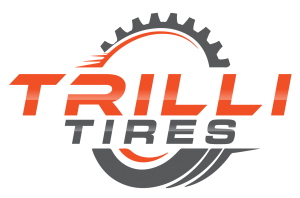Ontario, Canada, is known for its picturesque winter landscapes, but it’s also notorious for its harsh winter weather. When the temperature drops and snow blankets the province, it’s crucial to ensure your vehicle is prepared to handle the challenges of winter driving. In this comprehensive guide, we’ll walk you through the essential steps to winterize your vehicle for the bitter cold and treacherous road conditions in Ontario.
Winter Tires: Your First Line of Defense
One of the most critical steps in preparing your vehicle for a Canadian winter is installing winter tires. Unlike all-season tires, winter tires are specifically designed for cold weather and provide better traction on snow and ice-covered roads. Be sure to check the tread depth and condition of your winter tires. If they’re worn out or damaged, it’s time for a replacement.
Check Your Battery
Cold weather can put immense strain on your vehicle’s battery, leading to reduced performance or even a dead battery. Before the Canadian winter sets in, have your battery tested to ensure it’s in good working condition. If it’s old or showing signs of weakness, replace it to prevent the frustration of a dead battery on a freezing morning.
Engine Coolant and Antifreeze
Ensure that your vehicle’s coolant and antifreeze levels are appropriate for the winter temperatures. It’s important to have the right mixture to prevent freezing, as this can lead to serious engine damage. Consult your owner’s manual or a mechanic to determine the correct mixture for your vehicle.
Fluids and Oils
Replace your engine oil and other fluids with products designed for winter use. Cold temperatures can cause oil to thicken, reducing its ability to lubricate the engine effectively. Winter-grade oils flow better in low temperatures, ensuring your engine runs smoothly.
Windshield Wipers and Washer Fluid
Visibility is a top priority during winter driving. Inspect your windshield wipers and replace them if they’re worn out. Use high-quality winter wiper blades to clear snow and ice effectively. Also, ensure your windshield washer fluid contains antifreeze and is topped up regularly to keep your windshield clean.
Prepare an Emergency Kit
Ontario’s winter weather can be unpredictable, so it’s essential to be prepared for emergencies. Assemble an emergency kit that includes items like a flashlight, blankets, non-perishable food, a first-aid kit, and a small shovel. This kit can be a lifesaver in case you get stuck in a snowstorm.
Inspect the Brakes
Winter driving often involves slippery road conditions, so having well-functioning brakes is vital. Have your brakes inspected by a professional to ensure they are in top condition. Consider installing snow tires with extra stopping power for added safety.
Adjust Tire Pressure
Cold weather can cause a decrease in tire pressure, affecting your vehicle’s handling and fuel efficiency. Check your tire pressure regularly and maintain it at the recommended level, which can be found in your vehicle’s owner’s manual or on a sticker inside the driver’s side door frame.
Drive Belts and Hoses
Inspect the drive belt and hoses under the hood for signs of wear, cracks, or damage. Cold temperatures can make rubber components more brittle, so replacing any compromised parts is a smart preventative measure.
Clean and Wax Your Vehicle
A clean vehicle not only looks good but also helps reduce the buildup of road salt, which can lead to corrosion. Regularly wash your vehicle, including the undercarriage, and apply a layer of wax to protect the paint. Consider investing in rustproofing to further shield your vehicle from the harsh winter elements.
Winterize Your Locks and Door Seals
Frozen locks and door seals can be a common issue during Canadian winters. Apply a silicone-based lubricant to your locks and door seals to prevent freezing and make it easier to enter your vehicle on frosty mornings.
Be Prepared for Winter Emergencies
Canadian winters can bring unpredictable conditions. Equip your vehicle with essentials like a snowbrush, ice scraper, and a small shovel to help you deal with unexpected snowfall or ice. These simple tools can save you from being stranded or late for work.
Final Words
Winterizing your vehicle for the harsh Canadian winters in Ontario is not just a matter of convenience; it’s a safety imperative. Taking the time to prepare your vehicle properly can help prevent accidents and ensure that you can navigate the challenging winter conditions with confidence.
Remember to equip your vehicle with winter tires, check your battery and engine coolant, and ensure your vehicle’s fluids and oils are appropriate for the cold. Regular maintenance and preparation can make a world of difference when the snow begins to fall.
As you prepare your vehicle for winter, don’t forget the importance of a well-stocked emergency kit and the convenience of keeping your vehicle clean and waxed. All these steps add up to a safer and more enjoyable winter driving experience in Ontario.
When it comes to winter tires and maintaining your vehicle for the Canadian winters, TrilliTires in Richmond Hill has you covered. Visit our store to get your vehicle winter-ready with the best tires and expert advice. Stay safe on Ontario’s winter roads!
